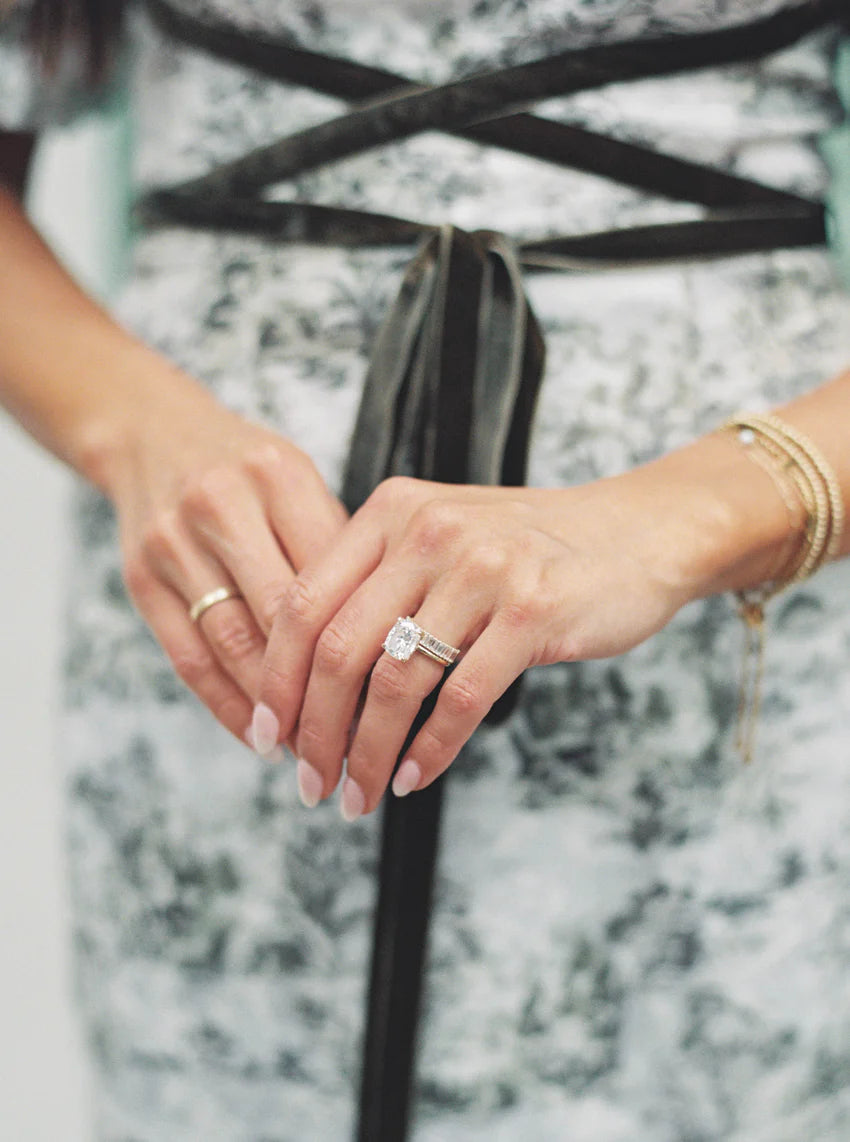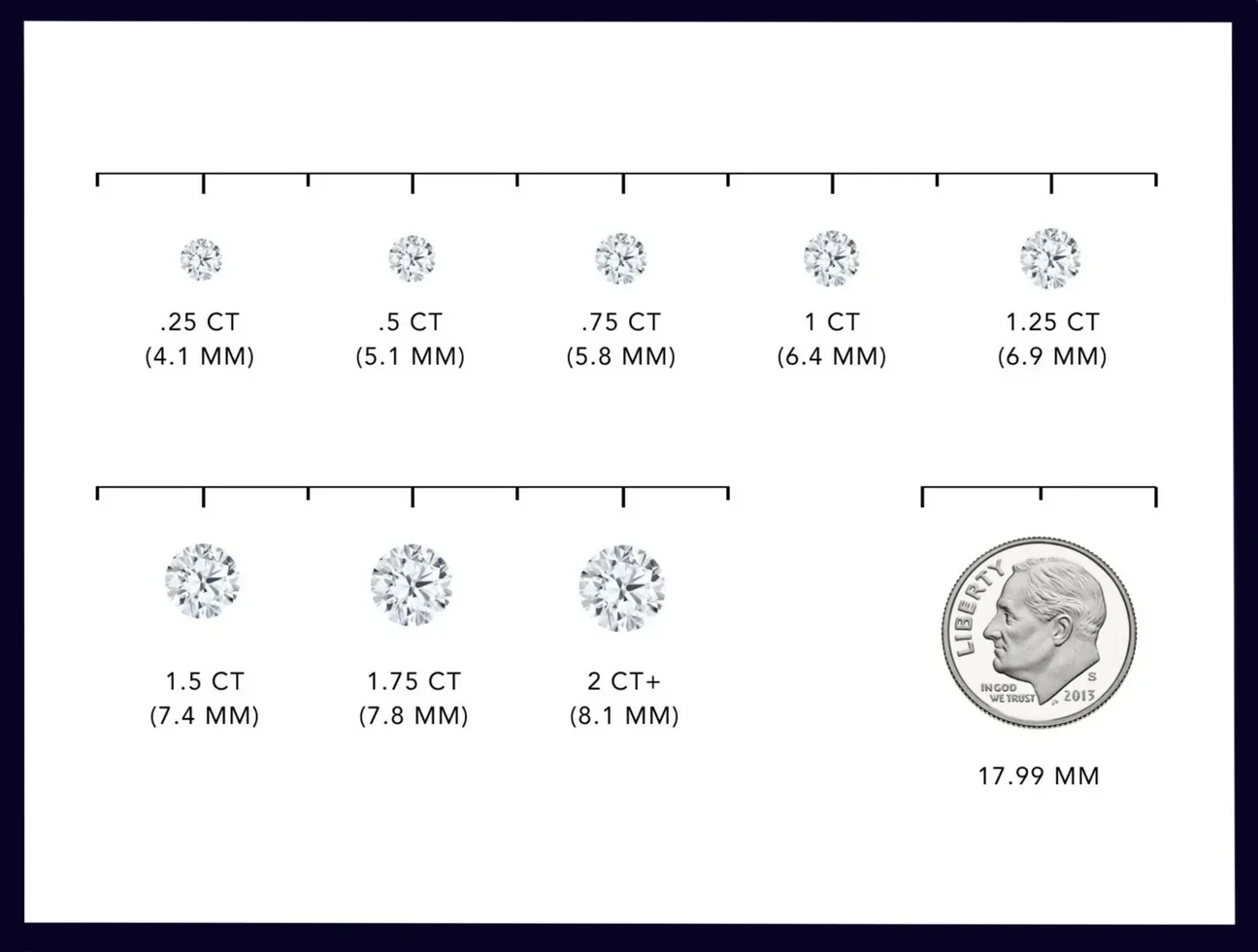Diamond Education
This guide explores how to assess diamond grades according to the industry standards in cut, color, clarity, and carat.

GRADING A DIAMOND
The Lab Grown Diamonds we sell are graded by an independent, third-party laboratory called The International Gemological Institute or IGI for short. IGI is the most commonly used laboratory for grading lab-grown diamonds and it is who we use to make sure you are secure in your purchase. When you buy a certified diamond, you can feel confident knowing exactly what you are purchasing.
There are 4 main factors in grading a diamond, the Cut, the Color, the Clarity, and the Carat Weight.
CUT
THE MOST IMPORTANT C
Contrary to many people’s belief, the Cut grade (Also called the Wow-Factor) is actually the most important of the 4 C’s to most consumers. The Cut grade comes from many factors such as symmetry, polish, proportions, and size and position of facets. A smaller diamond that is cut optimally (Excellent or Ideal Cut) will sparkle much better and many times will look larger than a larger diamond that is cut sub-optimally (Poor, Fair, or Good Cut). The consistency and balance of all of these factors can greatly affect how the stone reflects light back to the eye.
-

SUPER IDEAL
These diamonds have the most desirable dimensions and are proportioned to return the maximum possible light.
-

IDEAL
Exquisite quality cut to create the optimal combination of brilliance and fire. Reflects nearly all light that enters the diamond.
-

VERY GOOD
Superior quality cut that reflects nearly as much light as the ideal cut while at a substantially lower cost.
CUT CHARACTERISTICS
1. POLISH
Polish is the quality of a diamond's external surface condition as a result of the polishing process. Various features, such as pits or nicks, are considered in evaluating polish. It is graded on a scale ranging from Ideal or Excellent to Poor and is generally listed on a diamond certificate.
2. SYMMETRY
Symmetry is the exactness of a diamond's external shape and the even arrangement of its facets. Therefore, it can be divided into two categories: proportion-related (external) and facet-related (internal). It is also graded on a scale ranging from Ideal or Excellent to Poor and is generally listed on a diamond certificate.
3. PROPORTION
A diamond's proportion is measured by its crown and pavilion angles and the overall measurements of its facets. As facets are like tiny mirrors, their proportion can be a crucial contributor to the overall face-up appearance of a diamond. Proportion can also help professionals understand how well a diamond will produce sparkle.
4. BRILLIANCE
Brilliance, sometimes referred to as brightness, is the internal and external white light that reflects from a diamond. Each time light enters a diamond, its internal facets send it off in different directions, depending on the angle and tilt of the facets. Masterfully cut diamonds demonstrate superb brilliance because they bounce light off multiple facet surfaces.
COLOR
DIAMOND COLOR SCALE
Diamond color refers not to the presence of color within a diamond but to the absence or lack of it. As one of the 4 C's used to describe and determine diamond quality, it is an important factor in a diamond's appearance and value. A technically perfect diamond, like a drop of pure water, is colorless, while others may contain a slight yellowish tint or a fancy color, such as pink or blue.
-

D
Absolutely colorless or icy white. The highest color grade—extremely rare and most expensive.
-

E
Colorless. Only miniscule traces of color can be detected by an expert gemologist—a rare, high quality diamond.
-

F
Colorless. Slight color detected by an expert gemologist, but still considered a “colorless” grade—a high-quality diamond.
-

G
Near-colorless. Color noticeable when compared to diamonds of better grades, but offers excellent value.
-

H
Near-colorless. Color noticeable when compared to diamonds of better grades, but offers excellent value.
CLARITY
DIAMOND CLARITY SCALE
Clarity is the absence of internal inclusions and surface blemishes on a diamond. It's one of the four factors that describe and determine a diamond's quality and value.
-

IF
Internally Flawless. No internal flaws.
-

VVS1
Very very slightly included 1. Very difficult to see under 10x magnification.
-

VVS2
Very very slightly included 2. Very difficult to see under 10x magnification. Slightly more inclusions than VVS1.
-

VS1
Very slightly included 1. Difficult to see inclusions under 10x magnification. Typically cannot see inclusions with the naked eye.
-

VS2
Very slightly included 2. Difficult to see inclusions under 10x magnification. Typically cannot see inclusions with the naked eye. Slightly more inclusions than VS1.
CARAT
HOW BIG IS A CARAT?
A carat is synonymous with weight, not with the size of a diamond or other gemstone. For example, because of varying densities, a one-carat round diamond may measure 6.4mm, while a one-carat round sapphire might measure 6.0mm. Shape, cut, and depth also play a role in determining how big a carat appears.
This diagram illustrates the typical size relationship of round diamonds in increasing carat weights. Remember, every gemstone is unique, and the appearance of carat weight varies.















